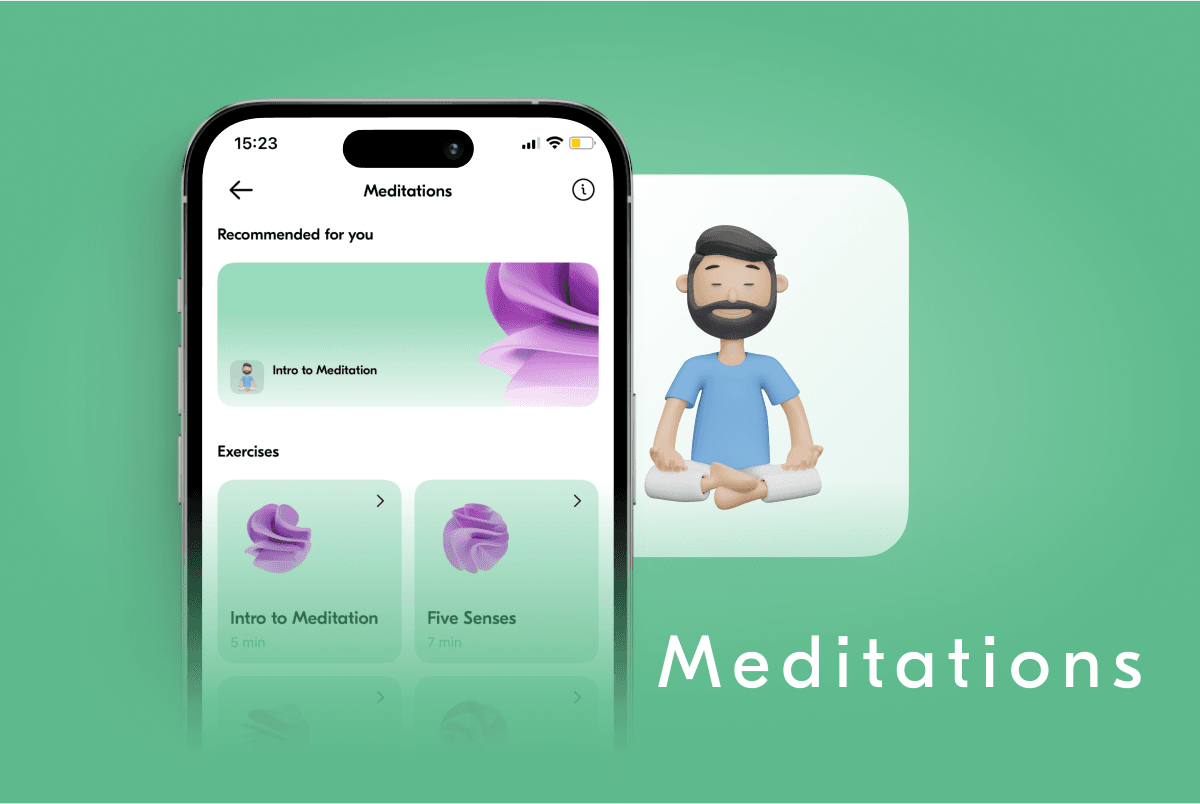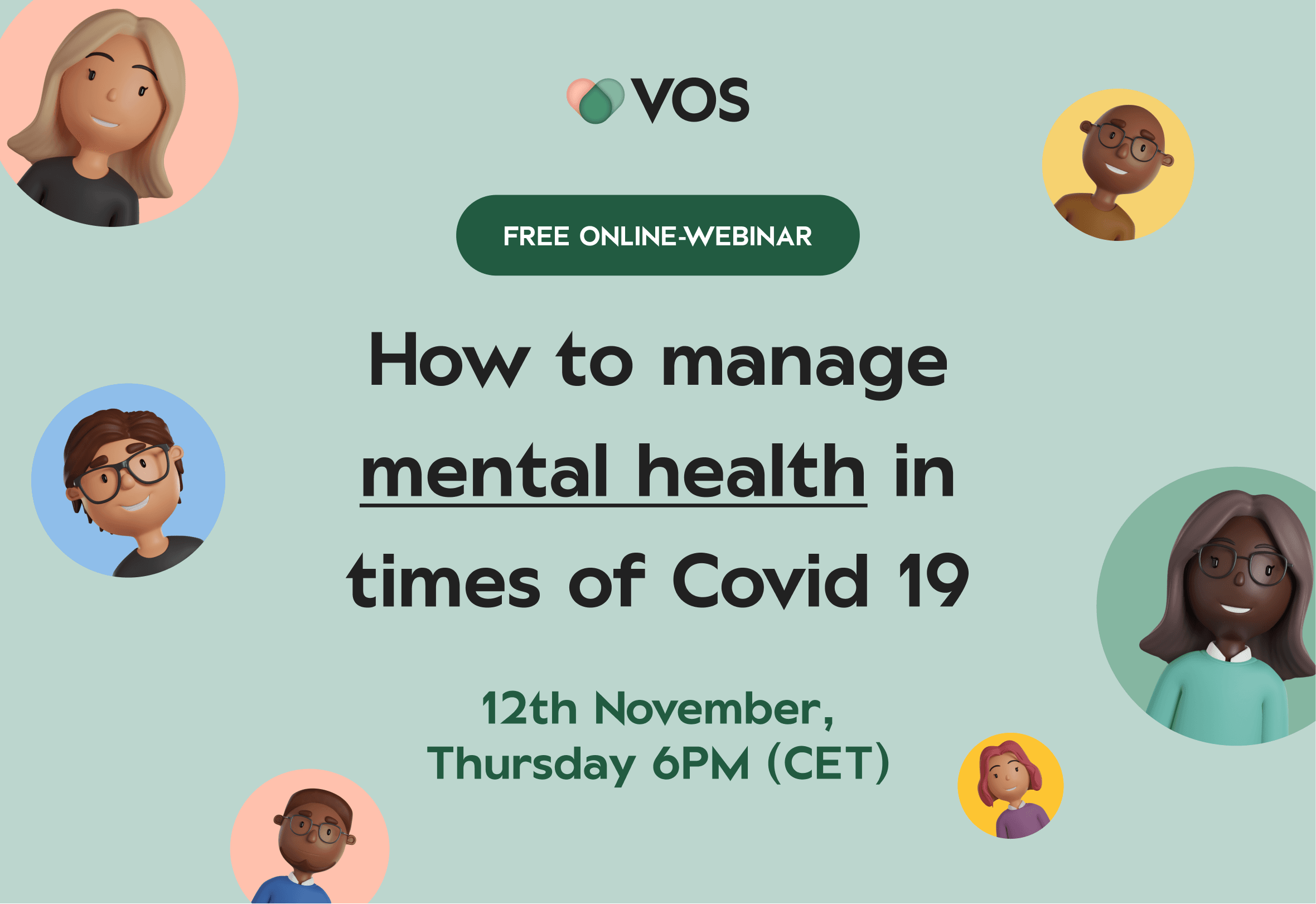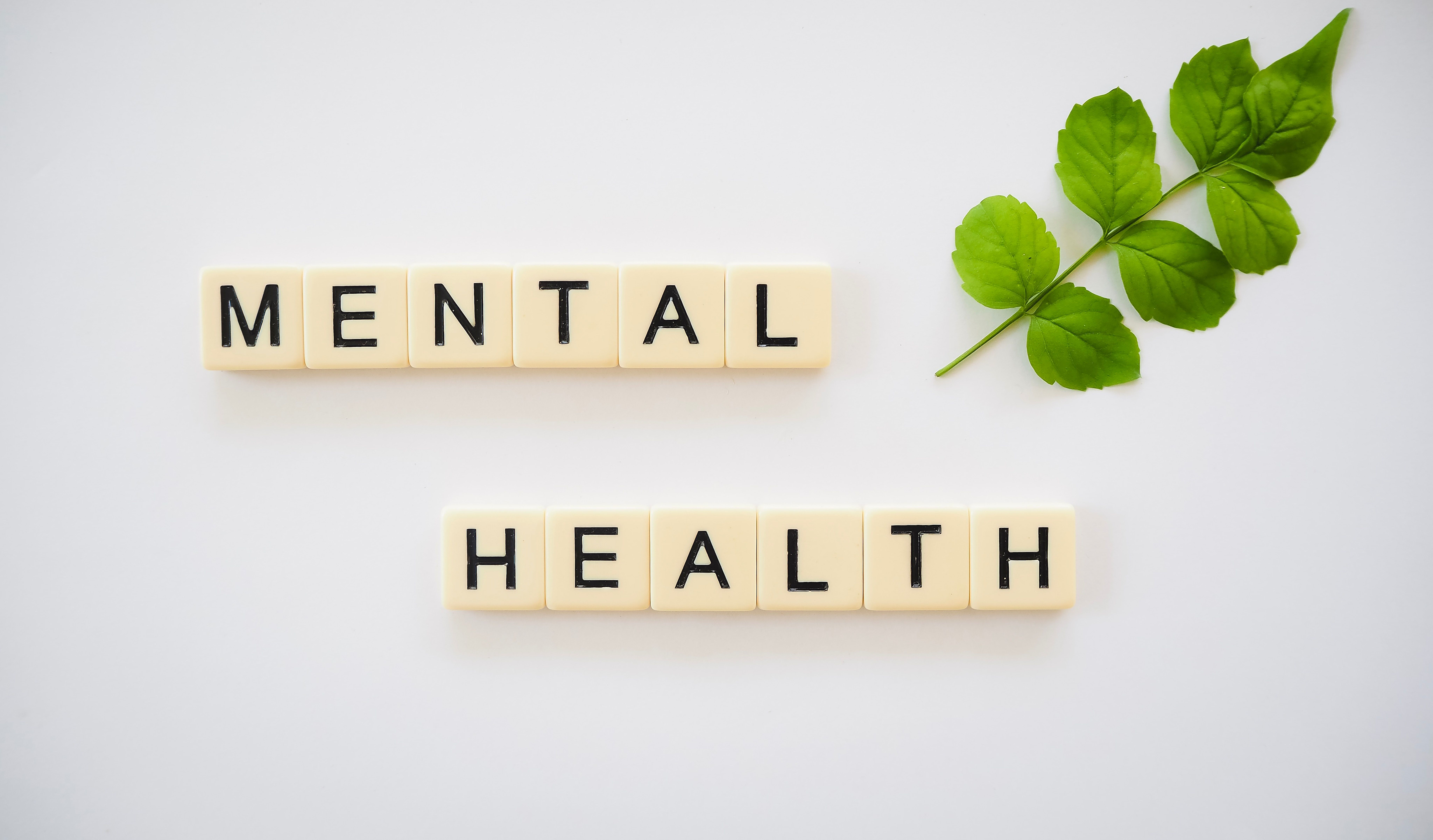About VOS's Meditations
We are all devastated by the tragedy that is happening in Ukraine. We can’t even imagine what the families from Ukraine must be going through. Those brave people are fighting for their beloved country and they’re in danger of losing their homes, their friends, and family members.
However, this war impacts the mental health of people everywhere around the world. It’s normal to feel afraid and sad even though you’re not personally from Ukraine and you don’t know anyone from there.
This situation is without a doubt extremely stressful, difficult, and could lead to panic attacks or acute stress reactions. In this article, I will share a couple of S.O.S. tips and techniques you can use when you or your loved one experience panic or extreme stress.
What is an acute stress reaction and panic attack, and what are their symptoms?
An acute stress reaction is a physical and emotional response to a tragic and particularly stressful event. As you can read in Dr. Knott’s article, its symptoms can be psychological, such as anxiety, irritability, emotional ups and downs, wanting to be alone, or erratic concentration. However, an acute stress reaction also manifests itself physically, e.g. by heart palpitations, nausea, headaches, poor sleep, chest pain, or breathing difficulties.
Panic attacks also have both emotional and physical symptoms. Fear, intense anxiety, feeling like you’re dying or in grave danger – those are some commonly described emotional symptoms. Sweating, rapid breathing, trembling, and a rapid heartbeat are the physical symptoms. You can find this and much more on panic attacks in Jamie Smith’s article.
People dealing with a war conflict blazing across their country are exposed to painful loss and ever-present danger. All this stress can make them experience intense physical and emotional reactions. Let’s now focus on what to do when this happens.
STOP and find a safe place
If you feel a panic or intense anxiety coming on, you need to STOP what you’re doing and try to find a place where you will feel as safe as possible. Sit down and if you can, lean your back against the wall.
Breathing exercises
Rapid breathing can lead to hyperventilation, so try to control your breathing. You can find breathing exercises in the VOS app (try the one named “SOS”) or also here. Generally speaking, try to exhale for a bit longer than you inhale. Imagine you’re drawing the number 1 in the air. The shorter part represents inhalation, and the longer part exhalation. Square breathing can be useful, too – breathe in for a count of four, then hold for four, and breathe out for a count of four.
Progressive muscle relaxation
Progressive muscle relaxation is often used to reduce stress and anxiety. As the author says, find a quiet place and make yourself as comfortable as possible. Lie down on the floor or recline in the chair. Do a couple of breathing exercises before you start with progressive muscle relaxation.
Now, focus your attention on the following areas, being careful to leave the rest of your body relaxed.
Forehead: Squeeze the muscles in your forehead, holding for 15 seconds. Feel the muscles becoming tighter and tenser. Then, slowly release the tension in your forehead while counting for 30 seconds. Notice the difference in how your muscles feel as you relax. Continue to release the tension until your forehead feels completely relaxed. Breathe slowly and evenly.
Jaw: Tense the muscles in your jaw, holding for 15 seconds. Then release the tension slowly while counting for 30 seconds. Notice the feeling of relaxation and continue to breathe slowly and evenly. Neck and shoulders: Increase tension in your neck and shoulders by raising your shoulders up toward your ears and hold for 15 seconds. Slowly release the tension as you count for 30 seconds. Notice the tension melting away. Arms and hands: Slowly draw both hands into fists. Pull your fists into your chest and hold for 15 seconds, squeezing as tight as you can. Then slowly release while you count for 30 seconds. Notice the feeling of relaxation.
Buttocks: Slowly increase tension in your buttocks over 15 seconds. Then, slowly release the tension over 30 seconds. Notice the tension melting away. Continue to breathe slowly and evenly.
Legs: Slowly increase the tension in your quadriceps and calves over 15 seconds. Squeeze the muscles as hard as you can. Then gently release the tension over 30 seconds. Notice the tension melting away and the feeling of relaxation that is left. Feet: Slowly increase the tension in your feet and toes. Tighten the muscles as much as you can. Then slowly release the tension while you count for 30 seconds. Notice all the tension melting away. Continue breathing slowly and evenly.’
The 5-4-3-2-1 technique
You can also try the 5-4-3-2-1 technique. This is a grounding exercise that can help you in stressful moments. Once you have control of your breathing and you’re in a comfortable position, try this mindfulness exercise:
- Look for 5 things you can see and name them.
- Name 4 things you can touch right now.
- Name 3 things you can hear at this moment.
- Notice and name 2 things you can smell now.
- Name one thing you can taste at that moment.
The last point might be a bit tricky, but overall, this technique will help you re-center and stay present.
Take care of your needs Once you manage to calm down, try to connect with your body. Are you thirsty? Hungry? Do you feel cold? Try to make yourself feel as comfortable as possible.
Counting backward Another useful exercise to slow down your mind a bit is counting backwards from 100 by 7. Focus on the math: 100… 93… 86…
If you’d like to learn about more techniques, We recommend Woody Schuldt’s article.
In times like these, it’s completely understandable that you feel hopeless or anxious. We all have different reactions to stressful events and each of us will experience different feelings and needs. If your emotions become too overwhelming to deal with and you realize you need help, please don’t hesitate to contact mental health experts.
You can connect with a professional very fast using VOS’ Chat with Advisors. We wish you all a lot of strength!



